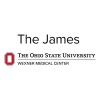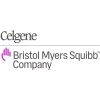
Liposomal Doxorubicin, Vincristine, & Dexamethasone Plus Arsenic Trioxide in Untreated Symptomatic...
Multiple MyelomaThis study will assess the ability of Doxorubicin, Vincristine and Dexamethasone plus arsenic trioxide to achieve an overall response rate of greater than 60%.

Melphalan and Panobinostat (LBH589) for the Treatment of Patients With Recurrent Multiple Myeloma...
Multiple MyelomaRATIONALE: Drugs used in chemotherapy, such as melphalan, work in different ways to stop the growth of cancer cells, either by killing the cells or by stopping them from dividing. Panobinostat may stop the growth of cancer cells by blocking some of the enzymes needed for cell growth. Giving melphalan together with panobinostat may kill more cancer cells. PURPOSE: This phase I/II trial is studying the side effects and best dose of melphalan when given together with panobinostat in treating patients with recurrent multiple myeloma.

IFM2009-02-Pomalidomide and Dexamethasone Phase 2 Myeloma
Multiple MyelomaThe purpose of this study is to evaluate the response to pomalidomide and dexamethasone in relapse and refractory MM patients who are progressive and did not achieve at least a partial response to bortezomib and lenalidomide. This study will determine the efficacy and toxicity profile of 2 modalities of pomalidomide in patients with advanced myeloma, previously heavily treated characterized with adverse prognostic and that are in desperate need of novel therapeutics.

A Study of the Combination Vorinostat With Lenalidomide, Bortezomib and Dexamethasone for Patients...
Multiple MyelomaThe purpose of the study is to evaluate the clinical effectiveness and side effects of the vorinostat, bortezomib, lenalidomide, and dexamethasone investigational combination.

Busulfan, Cyclophosphamide, and Autologous Stem Cell Transplant in Treating Patients With Multiple...
Multiple Myeloma and Plasma Cell NeoplasmRATIONALE: Giving high-dose chemotherapy before an autologous stem cell transplant stops the growth of cancer cells by stopping them from dividing or killing them. An autologous stem cell transplant may be able to replace the blood-forming cells that were destroyed by the chemotherapy. PURPOSE: This phase II trial is studying how well giving busulfan together with cyclophosphamide followed by an autologous stem cell transplant works in treating patients with multiple myeloma.

Effect of Combination of Bortezomib/Dexamethasone/Zoledronic Acid on Bone Disease in Patients With...
Multiple MyelomaThe aim of this study is to evaluate the effect of bortezomib in combination with dexamethasone and zoledronic acid on bone mineral density (BMD) and skeletal related events (SREs) in Patients with Multiple Myeloma who Have Relapsed after 1-3 Prior Lines of Therapy

A Safety Confirmation Study on Lenalidomide With Dexamethasone In Japanese Patients With Previously...
Multiple MyelomaTo evaluate the safety and efficacy of lenalidomide with dexamethasone in Japanese patients with previously treated multiple myeloma.

Acupuncture for Chemo-Induced Peripheral Neuropathy
LymphomaMyeloma1 moreThe goal of this clinical research study is to learn if giving acupuncture to patients with lymphoma or a plasma cell dyscrasia can help to relieve numbness and/or tingling of the feet and/or hands that is related to chemotherapy.

Combination Plerixafor (AMD3100)and Bortezomib in Relapsed or Relapsed/Refractory Multiple Myeloma...
Multiple MyelomaThe purpose of this research study is to determine the safety of plerixafor and bortezomib, and the highest dose that can be given to people safely. Plerixafor appears to stop myeloma cells from attaching to bone marrow and has been used in other phase I studies for mobilization of stem cells for patients with myeloma and lymphoma. We have shown that the combination of plerixafor and bortezomib is very effective in killing myeloma cells in the laboratory more than the effect of each drug alone.

Trial of Activated Marrow Infiltrating Lymphocytes Alone or in Conjunction With an Allogeneic Granulocyte...
Multiple MyelomaPatient Population: Patients with active myeloma (Stage II/III) that have completed induction therapy and are eligible for an autologous stem cell transplant. Number of Patients: Will treat a total of 32 evaluable patients in a 1:1 randomization of aMILs vs aMILs plus vaccine. An evaluable patient is defined as one which has received the activated MILs and is at least 6 months post-transplant. Study Objectives: Disease response as determined by the Blade' criteria will be the primary endpoint of the trial at one year. Additional study endpoints include progression free survival, parameters of T cell reconstitution, anti-tumor immune responses as well as the effect on osteoclastogenesis and clonogenic myeloma precursor cells.
